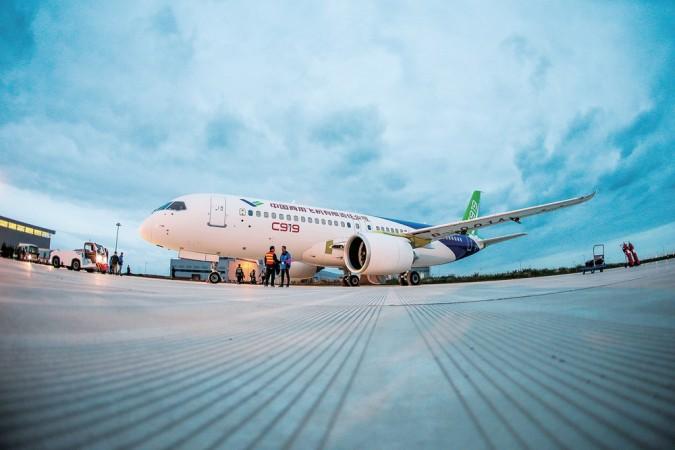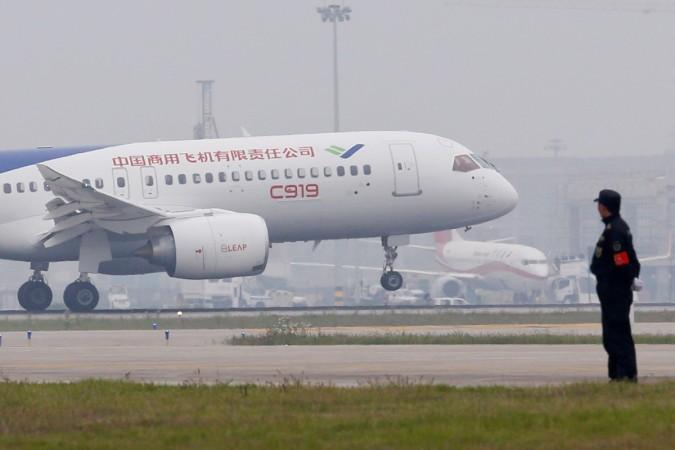
China's first homegrown narrow-body passenger jet, the C919, took off from the Shanghai Pudong International Airport on its maiden test flight on Friday. The new large civil aircraft, independently developed in China, is seen as the country's boldest attempt till date to challenge the monopoly of Western players in the commercial passenger jet market.
The C919, which is expected to rival the Boeing 737 and Airbus 320, was originally scheduled to take to the skies in 2014, but the plan fell through due to some manufacturing issues. If Friday's maiden flight is successful, C919's state-owned maker Commercial Aircraft Corp. of China Ltd. (Comac) will approach the country's civil aviation authority and foreign regulators for certification, before making any deliveries.
"C919 aircraft has a layout of 158 to 168 seats, and a range of 4,075 to 5,555 kilometers," Comac said on its website. "The first aircraft rolled out on November 2nd, 2015. A total of 570 orders have been obtained from 23 customers."
The C919 measures 12 metres in height and 38.9 metres in length. It has a wingspan of 33.6 metres and it can fly at a maximum altitude of 12,100 metres.

The plane is equipped with advanced technologies like the avionics system which alleviates pressure on pilots and improves navigation and human-machine interface. The plane's front windshield is composed of only four pieces, instead of six found on normal planes, to help reduce air resistance, Global Times reported.
Bao Pengli, deputy director of Comac's project management department, said the plane which took off Friday was the first of six C919 jets that would go through rigorous testing until 2019, before going into production.
China is also reportedly building various runways across the country for C919 test flights. Meanwhile, the second C919 is currently being produced at Comac's plant in Pudong, and is expected to make its first test flight in the second half of this year.
Comac said more than 200 Chinese companies and 36 universities have worked together to develop the C919 aircraft. However, it also relied on overseas companies like General Electric and Honeywell for critical parts, including the jet's engines and avionics systems.

While the C919 is part of China's goal to break into the Western-dominated global aviation industry, US experts believe the new Chinese-made passenger planes pose no threat to companies like Boeing and Airbus.
"Airbus and Boeing have spent decades competing fiercely against each other and are lean and mean in the airliner market. The duopoly in the airliner sector has resulted in very well-made products," Douglas Royce, an aerospace expert at Forecast International, told Xinhua.
Royce also added that "it will be very difficult for COMAC to break into western markets, particularly when very few airlines have experience with using COMAC's aircraft in service."
China has already been in talks with the European Aviation Safety Agency (EASA) and the US Federal Aviation Administration (FAA) to put C919 in foreign market. Royce believes the certification from these agencies will be a huge win for China.
"The aircraft requires Western certification to compete directly with Airbus and Boeing in major markets. On a symbolic level, it also shows huge progress for China's civil aircraft industry," Royce said.













